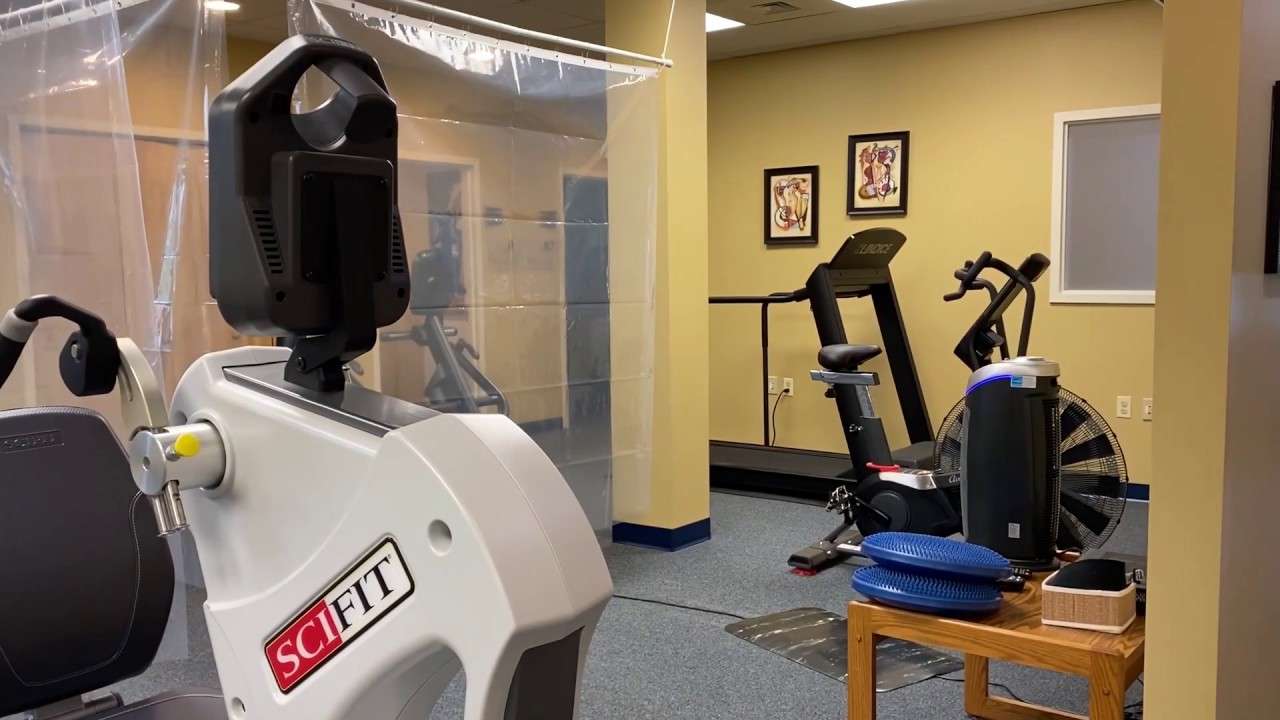
Dog owners everywhere realize the immediate joys that come with sharing their lives with these furry friends. Most of us remain unaware, however, of the physical and mental health benefits that dogs bring quite naturally.
Only quite recently have scientists explored the benefits of the human-canine bond. Studies show that dogs can reduce stress, anxiety and depression, ease loneliness, encourage exercise and playfulness, and even improve cardiovascular health.
As we celebrate National Dog Day worldwide on Aug. 26, we pay homage to the therapeutic benefits of dogs, whose nonjudgmental and loving disposition help patients feel more calm and open along the road to better mental health.
Many patients with mental illness benefit from dog therapy, and it’s easy to see why. Dog therapy has been tried and true for patients with dementia, Alzheimer’s, depression, PTSD, autism and more.
Dogs have evolved to become acutely attuned to human behavior and emotion. They are able to understand many of the words we use, but they’re even better at interpreting our tone of voice, body language and gestures. And like any good human friend, a loyal dog will look into your eyes to gauge your emotional state and try to understand what you’re thinking and feeling.
Dogs don’t have to say a word for you to know how they feel about you. A wag of a tail says it all. Dogs can serve a far greater purpose than just being the family pets.
Dogs can provide several benefits to people of all ages, even after limited interactions. This is why they’re often used in therapy and rehabilitation settings, especially those related to substance abuse and mental health.
With their presence alone, dogs can:
- Reduce stress and anxiety: Petting or positively interacting with a dog can increase levels of the stress-reducing hormone oxytocin and decrease production of the stress hormone cortisol. According to research from the Centers for Disease Control and Prevention, pets can help reduce childhood anxiety, including social anxiety and separation anxiety.
- Reduce depression and loneliness: People report feeling less lonely in the presence of animals — especially dogs. They keep us anchored in the present and distract us from negative or anxious thoughts.
- Create social opportunities: In a study at the University of Warwick in Coventry, England, 65 strangers stopped to speak with someone walking a dog, while only three people stopped to talk to that same person walking alone.
- Provide a sense of purpose: By owning a dog, we play an important role in their life by feeding and caring for them. These responsibilities can keep our minds occupied with something constructive, and remove any feelings of negativity.
- Lower blood pressure levels: Studies show that pet-owning patients with high blood pressure managed to keep their blood pressure lower in times of mental stress than patients without pets.
- Encourage exercise: People need daily exercise for optimum health. Dogs should also exercise regularly (daily, if possible), as long as their age and health status allow it. Daily exercise can provide mental and physical benefits for both of you, including improving cardiovascular health and reducing anxiety.
Therapy dogs are trained to be gentle and friendly and to accept strangers hugging them or petting them. They are patient and unbothered by children who tug at their fur or adults who want the smaller ones to sit in their laps.
While therapy dogs live in people’s homes, they can also visit a variety of settings, including retirement or nursing homes, schools, hospice homes and hospitals.
In the wake of the schools shootings in Florida, therapy dogs have been used as a way to provide comfort and support for students returning to school. Research has shown therapy dogs can reduce stress and provide a sense of connection in difficult situations.
Given the impact therapy dogs can have on student well-being, schools and universities are increasingly adopting therapy dog programs as an inexpensive way of providing social and emotional support for students.
Read more: Police in schools: helpful or harmful? It depends on the model
What are therapy dogs?
It’s important to note therapy dogs are not service dogs. A service dog is an assistance dog that focuses on its owner to the exclusion of all else. Service dogs are trained to provide specific support for individuals with disabilities such as visual or hearing difficulties, seizure disorders, mobility challenges, and/or diabetes.
The role of therapy dogs is to react and respond to people and their environment, under the guidance and direction of their owner. For example, an individual might be encouraged to gently pat or talk to a dog to teach sensitive touch and help them be calm.
Ohio University Libraries/Flickr
, CC BY-NC-ND
Therapy dogs can also be used as part of animal assisted therapy. This aims to improve a person’s social, cognitive and emotional functioning. A health care professional who uses a therapy dog in treatment may be viewed as less threatening, potentially increasing the connection between the client and professional.
There are also animal-assisted activities, which is an umbrella term covering many different ways animals can be used to help humans. One example is to facilitate emotional or physical mental health and wellbeing through pet therapy or the presence of therapy dogs. These activities aren’t necessarily overseen by a professional, nor are they specific psychological interventions.
Read more: More children are starting school depressed and anxious – without help, it will only get worse
Research suggests using therapy dogs in response to traumatic events can help reduce symptoms of depression, post traumatic stress disorder and anxiety.
So, what can happen psychologically for people using therapy dogs?
The human-animal bond
The human-animal bond can impact people and animals in positive ways. Research shows therapy dogs can reduce stress physiologically (cortisol levels) and increase attachment responses that trigger oxytocin – a hormone that increases trust in humans.
Dogs also react positively to animal-assisted activities. In response to the human-animal bond, dogs produce oxytocin and decrease their cortisol levels when connecting with their owner. Often dogs feel the same when engaging in animal assisted activities as if they were at home, depending on the environmental context.
Benefits of therapy dogs
Animal assisted therapy can:
More recently, therapy dogs are being used as a form of engagement with students at school and university.
Benefits of therapy dogs at school
Pioneer Library System/Flickr
, CC BY-NC-ND
A recent report highlighted children working with therapy dogs experienced increased motivation for learning, resulting in improved outcomes.
Therapy dogs are being used to support children with social and emotional learning needs, which in turn can assist with literacy development.
Research into the effects of therapy dogs in schools is showing a range of benefits including:
Despite these known benefits, many schools choose not to have therapy dog programs due to perceived risks. These range from concerns about sanitation issues to the suitability of dog temperament when working with children. But therapy dogs and owners are carefully selected and put through a strict testing regime prior to acceptance into any program.
The main reason for the lack of take up has been linked to the limited research into the benefits of therapy dogs in schools.
Benefits of therapy dogs at university
Researchers have found university students reported significantly less stress and anxiety, and increased happiness and energy, immediately following spending time in a drop-in session with a dog present, when compared to a control group of students who didn’t spend any time with a therapy dog.
Read more: Hugs, drugs and choices: helping traumatised animals
Generally, therapy dog programs rely on volunteer organisations. One example is Story Dogs, who currently have 323 volunteer dog teams in 185 schools across NSW, Queensland, Victoria, Tasmania, SA, WA, and ACT. In total, they help 1,615 children each week.
Research into these programs is needed to help further understand the impacts of therapy dogs, especially on student learning and academic outcomes. Lack of funding is setting this research back. University partnerships are one solution to address this.
What are service dogs?
Service dogs act as companions and aides to people who have a disability. Traditionally, this has included people with visual impairment, hearing impairments, or mobility impairments. Many people are familiar with this type of service animal.
These dogs can also assist people who have a condition that isn’t visible, such as diabetes. This is also true of mental health conditions, such as post-traumatic stress disorder, depression, and anxiety.
Service dogs differ from regular pets. To be legally recognized as a service animal, these dogs are trained to perform tasks that can help someone with a disability. Depending on the person’s needs, this can mean anything from bringing a person their medication during times of crisis to finding help during a medical emergency.
What are psychiatric service dogs?
Just like “standard” service dogs, psychiatric service dogs are trained to help a person accomplish necessary tasks and protect them from harm. Psychiatric service dogs typically assist people who have mental health conditions that interfere with their day-to-day lives.
A psychiatric service dog may help someone with anxiety by:
- bringing medication, or water to help swallow medication, during an anxiety attack
- bringing a phone over during an anxiety attack, which you can use to call your therapist or other support system
- leading someone to you if you’re in crisis
- providing tactile stimulation, such as licking your face, to help disrupt an emotional overload
- providing pressure against your chest or abdomen to create a calming effect during moments of distress
Sometimes, people mistake emotional support dogs for psychiatric service dogs. An emotional support animal simply provides the owner with a therapeutic presence. These animals aren’t trained to perform any tasks. This is because their presence is meant to mitigate any psychological or emotional symptoms you may be experiencing.
How to get a service dog
You must meet several criteria to be eligible for a service dog. This may include:
- having a physical disability or debilitating illness or disorder
- being able to participate in the dog’s training process
- being able to independently command and care for a service dog
- having a stable home environment
Service dogs are trained to meet a person’s needs before they’re placed in someone’s home. A dog that has already served as a pet usually can’t be trained later as service dog.
To apply for a psychiatric service dog, you will need a recommendation from a medical doctor or licensed mental health professional.
About 18 percent of American adults experience some form of mental health disorder. Overall, about 4 percent of American adults experience a severe or debilitating mental health disorder. This means that only a fraction of people who have a mental health disorder are qualified for a psychiatric service dog.
People who have anxiety that isn’t as debilitating may benefit from an emotional support animal. These domestic animals aren’t limited to canines. They’re intended to provide comforting companionship.
Emotional support animals are still regarded as pets in most situations. This means they don’t have the same legal protections as service animals in public and private spaces. These animals are afforded a few of the same provisions, though. A person with an emotional support animal is still qualified for no-pet housing and may fly with the animal without paying an extra fee.
People who believe they will benefit from an emotional support animal also need a prescription letter from a mental health professional.
What are other ways to cope with anxiety?
Coping with anxiety varies from person to person, so it’s important to find what works for you. What you may need depends on how you’re feeling and what’s triggering your anxiety.
Some general tips include:
- going for a walk
- practicing mindfulness
- performing breathing exercises
- getting a full night’s sleep
- exercising regularly
If you need help, reach out to your therapist or a mental health professional. If you don’t have one, the National Alliance on Mental Illness offers tips for how to find the right therapist or doctor for you. The organization also offers help in finding someone in your area. This can be done online or by calling 800-950-NAMI.
If you need immediate medical attention, you should call your local emergency services.
What you can do now
If you think that you would benefit from a service dog or emotional support animal, you should reach out to a therapist or another mental health professional. They can work with you to determine whether a service dog or emotional support animal is the best fit for you.
Keep reading: The best anxiety health blogs of the year »




